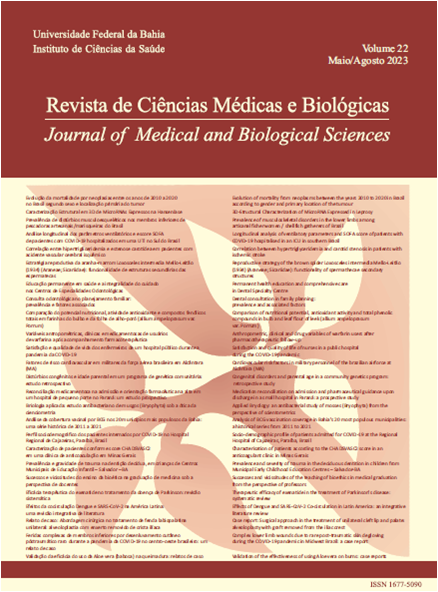Molecular Characterization in 3D Structure of MicroRNA Expressed in Leprosy
3D-Structural Characterization of MicroRNA Expressed in Leprosy
DOI:
https://doi.org/10.9771/cmbio.v22i2.50816Palabras clave:
Leprosy; MicroRNAs; Molecular structure.Resumen
Introduction: Hansen's disease, or leprosy is caused by Mycobacterium leprae, is a major public health problem in developing countries, and affecting the skin and peripheral nerves. However, M. leprae can also affect bone tissue, mucous membranes, liver, eyes, and testicles, producing a variety of clinical phenotypes. MicroRNAs (miRNAs) have been expressed in the various clinical forms of leprosy and could potentially be used for its diagnosis.
Objective: In silico design of the molecular structure of miRNAs expressed in leprosy. Method: We performed a nucleotide sequence search of 17 miRNAs expressed in leprosy, designing in silico the molecular structure of the following miRNAs: miRNA-26a, miRNA-27a, miRNA-27b, miRNA-29c, miRNA-34c, miRNA-92a-1, miRNA-99a-2, miRNA-101-1, miRNA-101-2, miRNA-125b-1, miRNA-196b, miRNA-425-5p, miRNA-452, miRNA-455, miRNA-502, miRNA-539, and miRNA-660. We extracted the nucleotides were from the GenBank of National Center for Biotechnology Information genetic sequence database. We aligned the extracted sequences with the RNA Folding Form, and the three-dimensional molecular structure design was performed with the RNAComposer.
Results: We demonstrate the nucleotide sequences, and molecular structure projection of miRNAs expressed in leprosy, and produces a tutorial on the molecular model of the 17 miRNAs expressed in leprosy through in silico projection processing of their molecular structures.
Conclusion: We demonstrate in silico design of selected molecular structures of 17 miRNAs expressed in leprosy through computational biology.
Descargas
Descargas
Publicado
Cómo citar
Número
Sección
Licencia
Derechos de autor 2023 Journal of Medical and Biological Sciences

Esta obra está bajo una licencia internacional Creative Commons Atribución 4.0.
A Revista de Ciências Médicas e Biológicas reserva-se todos os direitos autorais dos trabalhos publicados, inclusive de tradução, permitindo, entretanto, a sua posterior reprodução como transcrição, com a devida citação de fonte. O periódico tem acesso livre e gratuito.






